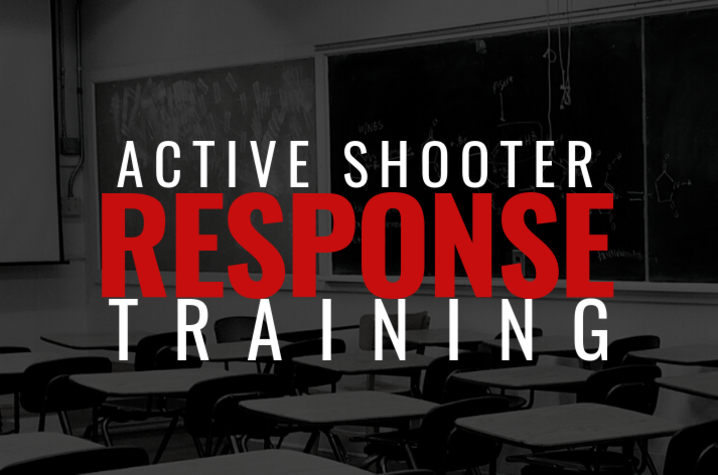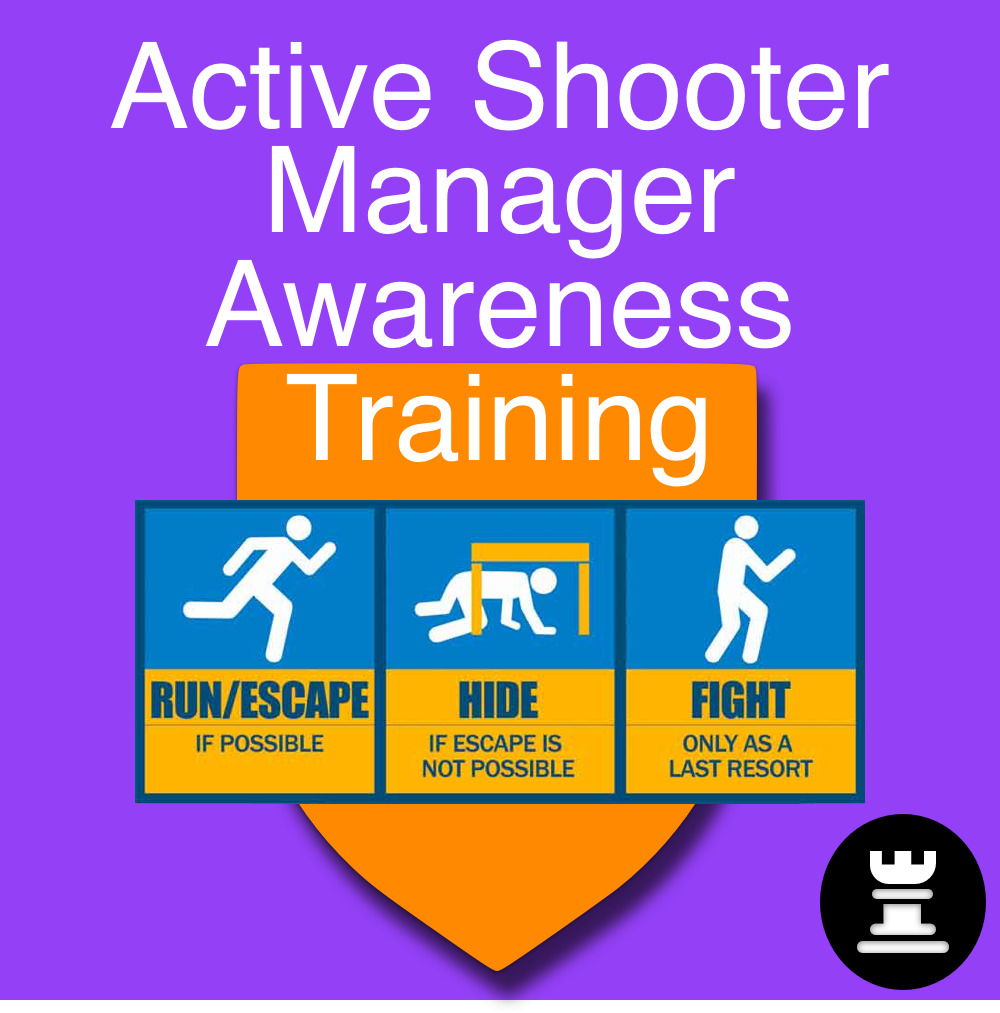The Advantages of Continuous Active Shooter Training for Community Protection
The Advantages of Continuous Active Shooter Training for Community Protection
Blog Article
Discovering the Secret Parts and Purposes of Effective Active Shooter Training Programs
Energetic shooter training programs are essential in gearing up individuals and organizations with the essential skills to react effectively to prospective dangers. These programs incorporate necessary components, such as the "Run, Hide, Fight" technique, sensible circumstance simulations, and interaction methods, fostering an environment of preparedness. Additionally, they highlight emotional strength to aid individuals browse high-stress scenarios. As we explore the intricacies of these training programs, it becomes apparent that understanding their extensive nature is important to improving precaution and response capabilities. What specific elements truly specify their performance?
Importance of Active Shooter Training
Active shooter training programs are important for improving preparedness and reaction despite prospective dangers. These programs intend to equip people, organizations, and areas with the knowledge and skills required to successfully reply to active shooter situations. The enhancing frequency and seriousness of such occurrences highlight the importance of positive actions, as prompt and enlightened actions can considerably minimize injury.
Furthermore, active shooter training cultivates a society of safety and security and understanding within organizations, whether they be institutions, workplaces, or public places. Individuals learn to acknowledge very early warning indicators and comprehend the significance of communication and synergy during emergencies. This training not only emphasizes private safety and security yet likewise promotes a cumulative obligation to shield others.
Furthermore, these programs can help ease the stress and anxiety and concern that frequently accompany conversations about possible risks. By giving structured support and functional approaches, individuals gain confidence in their capacity to respond appropriately. Eventually, the importance of energetic shooter training depends on its potential to conserve lives, minimize injuries, and cultivate a prepared and resilient neighborhood efficient in encountering unforeseen challenges.
Trick Components of Training Programs
Effective energetic shooter training programs normally include several key components made to prepare individuals for real-world circumstances. The initial component is extensive education and learning on the nature of energetic shooter cases, including statistics, study, and mental elements that influence assailants. This theoretical structure is essential for fostering awareness and understanding among individuals.
Following, programs often consist of training on individual precaution, emphasizing the "Run, Hide, Battle" method. Individuals discover exactly how to evaluate their atmosphere, make quick decisions, and take appropriate activities throughout a dilemma. Furthermore, the inclusion of reliable communication abilities is important, as individuals must understand how to report cases and share essential details with police.
One more vital component is the participation of police or safety specialists, that supply insights into tactical responses and the relevance of teamwork during a crisis. In addition, programs must deal with the emotional aftermath of an active shooter scenario, providing methods for coping and recovery.
Last but not least, recurring training and refresher course training courses are crucial to make sure that knowledge remains present and individuals really feel confident in their capacities. Together, these vital components develop an all-around training program that outfits individuals to react efficiently to an energetic shooter occasion.
Realistic Situation Simulations
Realistic situation simulations are an essential aspect of active shooter training programs, offering individuals with the possibility to participate in hands-on practice that mirrors potential real-life circumstances. These simulations improve the training experience by developing an immersive atmosphere where individuals can apply academic my response understanding in useful settings.
Via using role-playing, mock circumstances, and specialized training centers, individuals experience the immediate challenges and stressors connected with an active shooter incident. This approach of training promotes fast decision-making, synergy, and the application of safety procedures under stress. It permits responders to develop important skills such as situational recognition, risk evaluation, and efficient evacuation procedures.
Furthermore, reasonable simulations help to identify potential weak points in individuals' feedbacks, making it possible for trainers to provide targeted comments and boost general readiness. The consolidation of differing circumstances, consisting of various places and assailant profiles, further improves the training experience, making sure that participants are fully equipped to handle a variety of possible circumstances.
Ultimately, these simulations offer not just to instruct but additionally to develop confidence amongst individuals, promoting a sense of preparedness that is vital for effective emergency situation action when faced with an active shooter danger.
Communication Approaches in Training
Clear interaction is important in energetic shooter training programs, as it directly influences the efficiency of reaction initiatives during a crisis. active shooter training. Training individuals should recognize the procedures and treatments that will guide their activities if faced with an active shooter situation. Developing clear lines of communication makes certain that all individuals entailed can communicate details quickly and properly

Moreover, training programs need to highlight the importance of energetic listening. Individuals must be educated to translate and reply to info efficiently, minimizing misconceptions that might lead to hazardous circumstances. Normal comments sessions post-training can also improve communication approaches, making sure that all participants really feel equipped to share their experiences and ideas for enhancement. Inevitably, efficient communication techniques are important for preparing people to respond emphatically and cohesively in the face of an energetic shooter incident.

Mental Preparedness Techniques
Psychological readiness methods are increasingly recognized as crucial parts of active shooter training programs - active shooter training. These techniques you can look here intend to furnish individuals with the psychological durability required to respond properly in high-stress scenarios. By fostering a mindset in harmony with potential hazards, participants can much better manage anxiety, anxiety, and confusion throughout vital cases
Secret psychological readiness techniques consist of scenario-based training and anxiety inoculation exercises. Scenario-based training submerses participants in practical simulations that simulate the chaos of an energetic shooter event, enabling them to practice decision-making under pressure. This direct exposure assists construct experience with emergency situation protocols, boosting instinctual actions.
Stress vaccination involves progressive direct exposure to stress-inducing circumstances, permitting individuals to establish coping devices. This can include breathing workouts, visualization techniques, and cognitive description restructuring to reframe unfavorable ideas. By integrating these methods, training programs can grow a feeling of confidence and control, which is crucial in situation situations.
Additionally, post-incident psychological support is vital to address the emotional after-effects of an active shooter event. Integrating psychological health resources into training programs not just prepares people for immediate reactions but also promotes long-lasting psychological well-being, ultimately adding to a much safer and a lot more resistant atmosphere.
Final Thought
To conclude, efficient active shooter training programs are vital for improving preparedness and reaction abilities when faced with possible risks. By integrating vital elements such as practical situation simulations, interaction techniques, and mental readiness strategies, these programs equip individuals and organizations with the required skills to navigate high-stress situations. Inevitably, a thorough technique to training promotes durability and promotes a society of safety and security, consequently contributing to the general safety of neighborhoods in case of an active shooter event.
Report this page